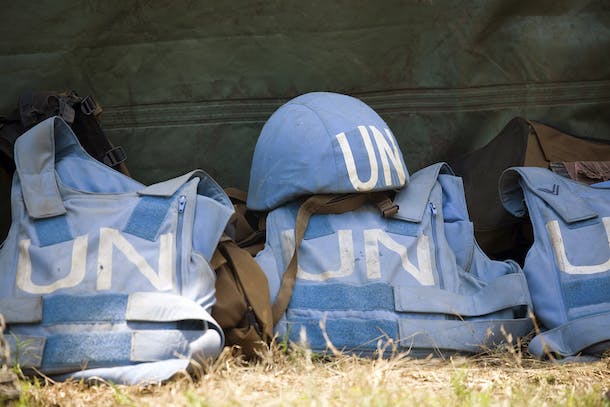Updated: May 8, 2019
Every day, more than 100,000 United Nations peacekeepers work to stabilize some of the world’s most volatile conflict zones – protecting civilians from violence; monitoring the implementation of peace agreements; disarming, demobilizing, and reintegrating former combatants into society; facilitating the delivery of humanitarian assistance; training national police forces; and supporting free and fair elections, and the creation of stable governing institutions.
Here are seven key facts to know about UN Peacekeeping:
14 PEACEKEEPING MISSIONS
As of May 2019, there are currently 14 UN peace operations deployed in five different regions: seven in Africa, three in the Middle East, two in Europe, one in the Americas, and one in Asia.
100,000+ UN PEACEKEEPERS
UN Peacekeeping is made up of over 100,000 total field personnel, with 125 countries contributing troops, police, and civilian personnel, including several dozen peacekeepers from the U.S.
8 TIMES MORE COST EFFECTIVE
According to a report by the U.S. Government Accountability Office, it is eight times more cost effective for the U.S. to financially support a UN Peacekeeping mission than to deploy U.S. military forces. Additionally, according to UN Peacekeeping, its annual budget is less than 0.5% of global military spending.
$7 BILLION
The UN Peacekeeping budget is around $7 billion, which helps more than 125 million people around the world. This is less than the city of Chicago’s budget.
WOMEN IN PEACEKEEPING
Women make up 30% of civilian, 10% of police, and 3% of military peacekeepers. Currently, there are three women leading peacekeeping missions in Haiti, Cyprus, and the Middle East. This is in line with the Secretary-General’s System Wide Strategy on Gender Parity. Currently, women serve as 25% of heads or deputy heads of peacekeeping missions, this is a sharp increase from ten years ago when women only comprised 2% of leadership in UN Peacekeeping.
PEACEKEEPING REQUIRES SERVICE AND SACRIFICE
Since 1948, when UN Peacekeeping operations began, more than 3,654 UN Peacekeepers have lost their lives in the service of peace. In 2018, 98 UN Peacekeepers were killed promoting global peace and security. In December 2017, UN Peacekeepers faced the largest attack on their forces killing 15 and wounding over 40 peacekeepers. UN Peacekeepers are deployed in dangerous places working to protect and support some of the most vulnerable populations in the world.
UN PEACEKEEPING IS EVOLVING
A key priority of Secretary-General Antonio Guterres is to reform UN Peacekeeping to make the enterprise more effective and efficient for the future. He has launched Action for Peacekeeping (A4P) which holds the Security Council, Troop Contributing Countries, Financial Contributors, Host Countries, and regional partners accountable to make UN Peacekeeping successful with the proper mandates, partnerships, and resources on the ground. One hundred and fifty countries have endorsed a shared road map to strengthen UN Peacekeeping. This commitment includes review of existing missions and closing ones that have met their mandates, most notably Liberia in 2018 and Côte d’ Ivoire in 2017. Each mission had a significant positive impact on security in their respective countries.
In addition, the UN Mission for Justice Support in Haiti (MINUJUSTH), a follow-on mission established in 2017, is expected to formally close in October 2019.
MINUJUSTH is a new configuration of only a police and civilian mission helping to sustain the gains of the previous mission with a smaller footprint. These important milestones represent how UN Peacekeeping is evolving for the next 70 years.

